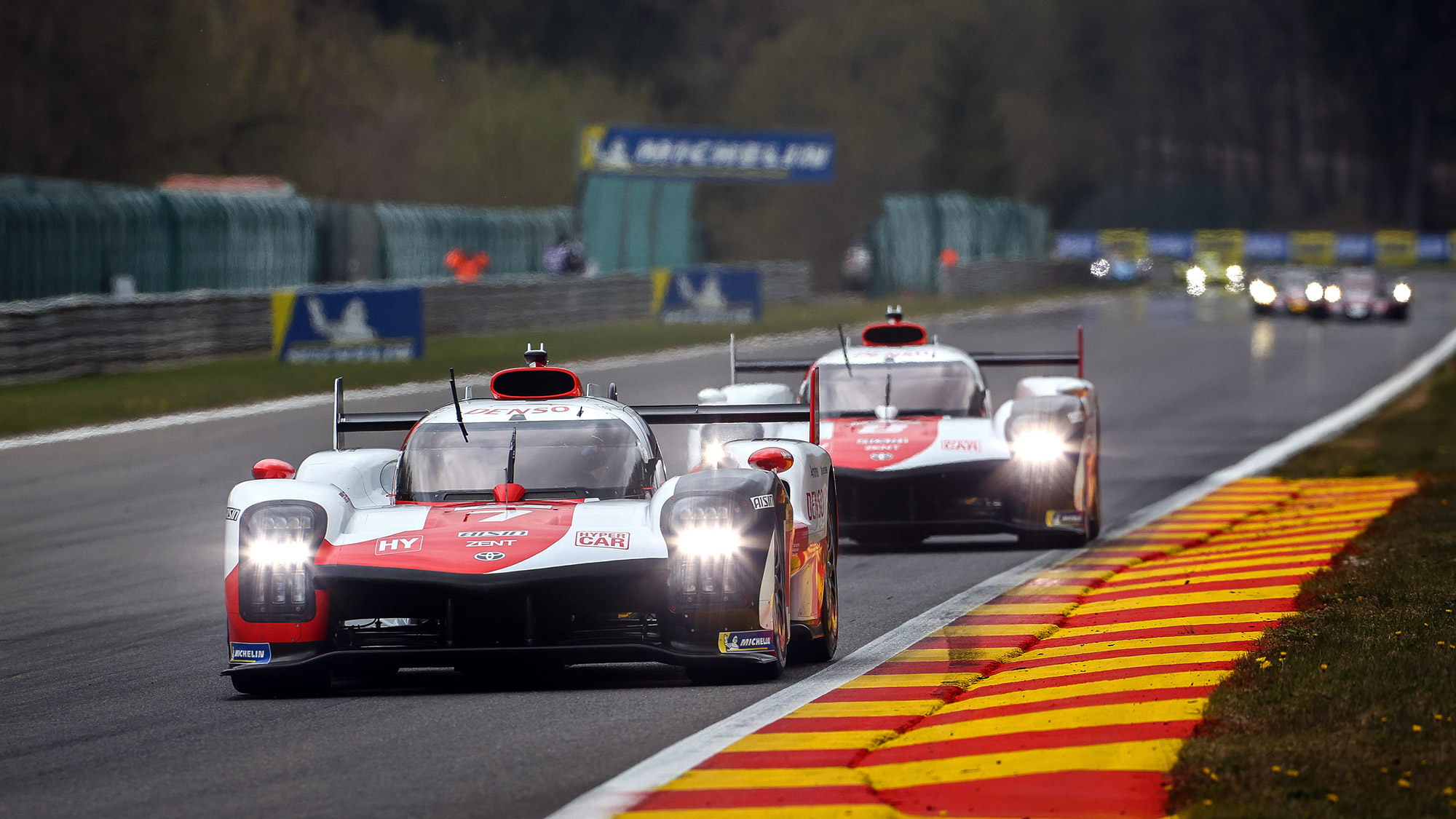Toyota Hypercar Takes Pole At Spa 6 Hours Despite Dismal Debut
Wednesday's test of the 2021 WEC field at Spa-Francorchamps seemed to reveal a problem, at least for Toyota. The new Hypercar class was always intended to be slower than the outgoing LMP1s — cost-cutting was part of the brief behind the new formula, after all. But they weren't supposed to be slower than privateer LMP2s, which is how it appeared the new regulations would play out, much to Toyota's chagrin.
Toyota's GR010 Hypercar finished that test a half-second behind the fastest LMP2 of the day. But come the end of Friday practice for tomorrow's 6 Hours of Spa, Toyota was back in the hot seat, lapping the Belgian circuit 1.5 seconds quicker than it did on Wednesday. That was comfortably good enough to top the timing chart.
Well, qualifying ended a while ago and — wouldn't you know — the #7 Toyota is perched on pole with a time of 2:00:747. That's roughly 1.7 seconds better than United Autosports' LMP2-leading Oreca.
Cue the sandbagging claims. Before qualifying, Frederic Lequein and Pierre Fillon, who run the WEC and ACO respectively, reaffirmed they won't slow down the LMP2s any further if more balancing is needed. Rather, they'll attempt to speed up the Hypercars instead. That was probably for the best. It would've been foolish to make snap decisions based on lap times recorded in practice, while teams are mostly concerned with faking each other out.
Still, the Hypercars and LMP2 are a bit closer in pace than Toyota would probably like. And that's after all of the modifications the LMP2 contingent needed to undergo to fall behind Toyota. The WEC gutted the class, forcing those cars to run inappropriate low-downforce aero kits at all tracks, plus intake air restrictors to cut power.
Balancing performance is always a challenge, particularly in multiclass racing where one category is changed as others stay the same. It's a lengthy trial-and-error process that never begins in an encouraging way. Add politics into the mix and complaints are inevitable.
I suppose it's good the WEC is wrangling with these headaches now, when Toyota is the only real ego at the table.
In the next two years, both Hypercars and IMSA's more cost-conscious LMDh class are expected to grow considerably, with entries from many big names. As of now, Toyota, Scuderia Cameron Glickenhaus, Peugeot, ByKolles and eventually Ferrari will form the Hypercar group; Acura, Audi and Porsche are the major LMDh players. LMDh is an evolution of the DPi category used in IMSA, and DPis are closest in speed to LMP2s.
Apologies for being pessimistic, but I sense a whole lot of bickering on the horizon.
You can bet the Ferrari brass would never accept turning noticeably slower laps than Porsche, certainly not in machinery that costs far more to build. Likewise, you'd expect Porsche wouldn't be eager to slow its cars down so Ferrari has a fighting chance. Of course, we have lots of time until the FIA and ACO ultimately reckon with that problem — Ferrari and Porsche's ETAs are currently set for 2023. By then, hopefully the powers that be will have ironed this all out.
But if the fix involves throwing yet more money at the problem, Hypercar could wind up in a place not too distant from LMP1: expensive and overwrought with complexity. Which is precisely what got us here in the first place.
